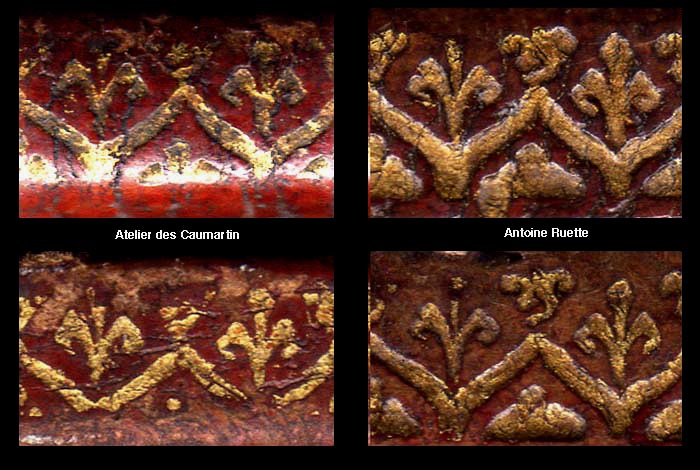

| When I was preparing the images for the Roll (roulette) section of the Caumartin finishing tools, I realized that I had not included all the rolls that were present on the Breviarium, and went back through my scanned material looking for examples. The Breviarium has actually at least four distinct rolls, two on the main outer margin of the boards, a third on the inner margin, and another on the edge of the boards. I had useful scans of these; however, the roll on the narrow edge of the boards appeared worn and only partially visible. |

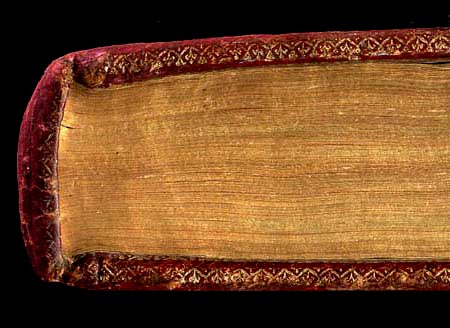

| I remember thinking, when I was scanning these edges, that it would be difficult to represent this roll with what seemed only partial remnants. Even a 'virtual' reconstruction would be shabby. However looking again at these edges, it suddenly dawned on me that the design was similar to that of the 1659 Ruette binding. I had worked long and hard already with this roll trying to show that the same roll is found on the Davis463 binding. (see Antoine Ruette page) |
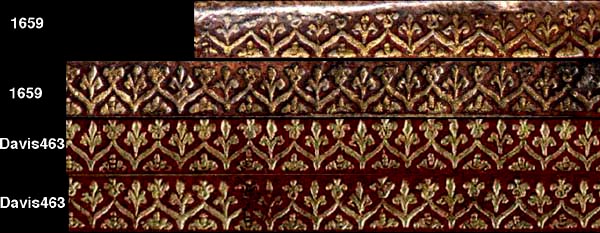
|
We see in the Comparative Diagram 2, that these two bindings share the same tool. Click on this image to see an enlargement. Unfortunately the quality of the BLDB photo will not allow further enlargements. In this sort of comparative study a magnified image is essential.
Inasmuch as I have both the Breviarium and the Ruette binding, I can scan them at very high resolutions, then search for any small details that may confirm whether or not they share imprints that were made by the same tool. Really it would be an amazing miracle if I just happened to acquire two 17c books with a common tool between them. Up to this point I had been satisfied scanning imprints with a resolution of 600dpi. However for this new work, I tried going up to 1200dpi and discovered that it was well worth the extra pixels. I scanned all of the roll imprints of the Ruette binding and stacked them together to look for matching details. |


| After a brief search, I located a very obvious flaw in one of the pods: the black line in the center of stacked roll impressions, above, marks the location of this flaw. The enlarged detail is a slice of the stack in this location to show the flaw as it appears in each roll section. Imagine my amazement to discover this same flaw in the roll impressions of the Breviarium edges! |
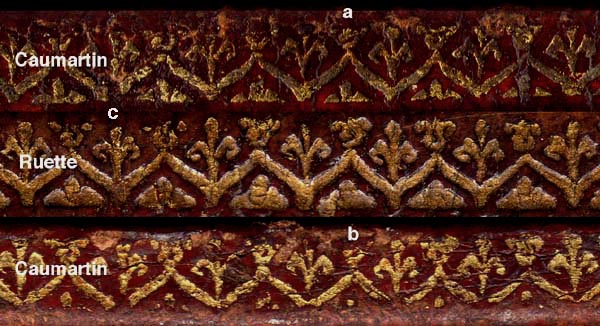
| In Comparative Diagram 3, we see that even though time and erosion have degraded the original imprints, enough remains to prove that these imprints were all made by the same tool. The flaw in the pods aligned at 'a' and 'b', match the Ruette example. Additionally we see that the Caumartin roll sections both have a break at point 'c', indicating damage that occurred at a later date. (click on this diagram to see a high resolution enlargement) |

|
(For those who want to compare the fine details, this thumbnail image is provided here as a link to the full-sized scan.) One has to wonder what the chances are of this highly coincidental lucky 'accident' happening. If you have been following these web pages you will know that some months back I launched into this study of French 17c decorative bookbinding after a chance eBay purchase of a 1647 Breviarium. Why did I buy it? Actually I was attracted to the binding, but the fact that it was published exactly 300 years before I was born was also an attraction. Such books or rather bindings are rare on eBay, where nearly 100,000 antiquarian books are auctioned weekly. It was months before another 'similar' looking binding appeared in the listings. With my interest, now much inflamed by my research, I was keen to acquire yet another binding of this kind. So I came to acquire a second example and thoroughly scanned and researched its decorative tooling, following the same methods I employed with the Breviarium, which is covered by my web pages on Antoine Ruette. (link to Ruette pages) Now while working on a complete catalogue of the Caumartin tools with the aid of the Esmerian Tableaux, I have made this 'chance' discovery.... what is the significance of finding a Ruette tool in the Caumartin collection?... will this clue lead us to the actual identity of the Caumartin binder?... for those who would like to believe in 'guiding' forces, this is, one for the books! |
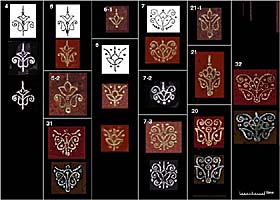
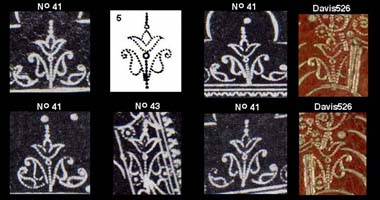
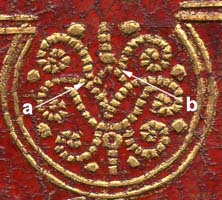
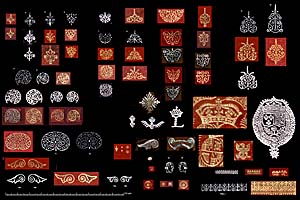
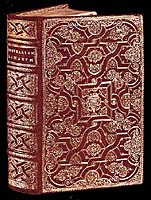
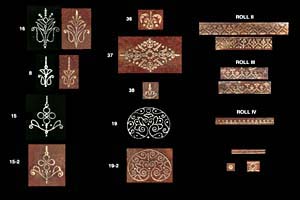
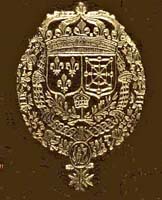
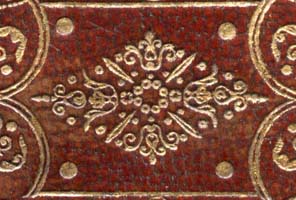

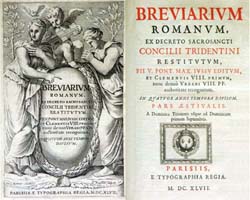
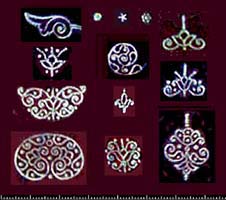
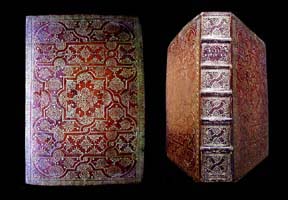
| information about the author | return to the home page of VIRTUAL BOOKBINDING |